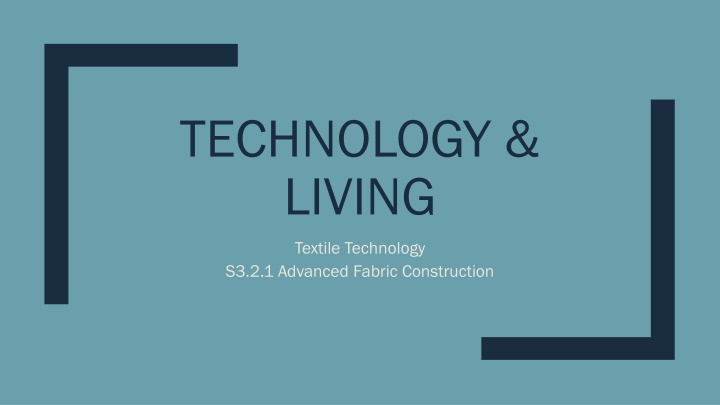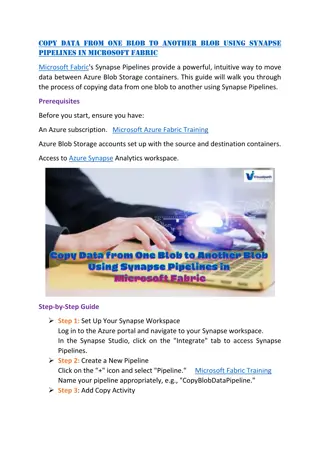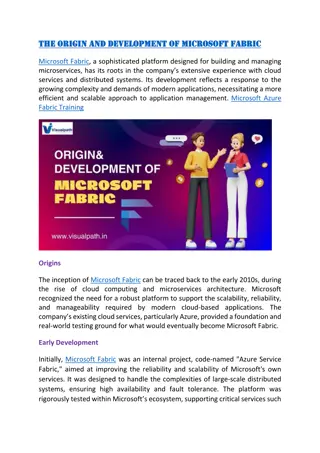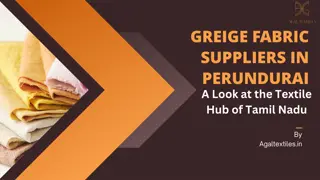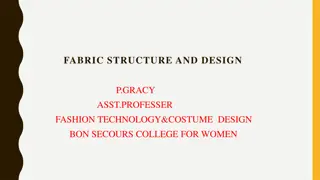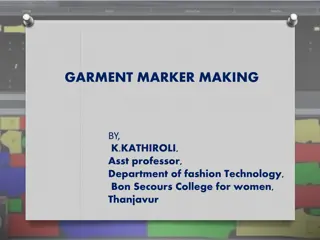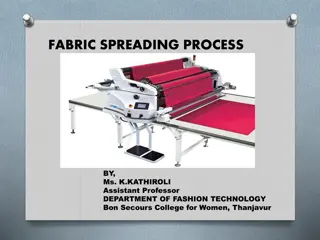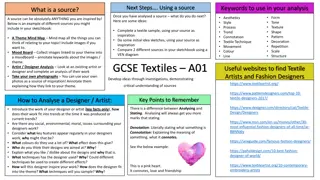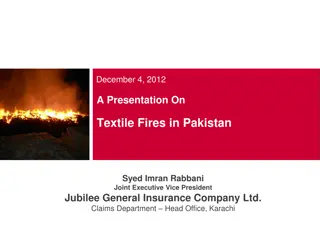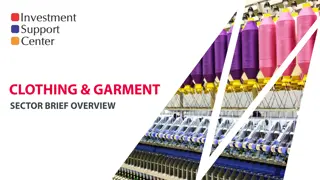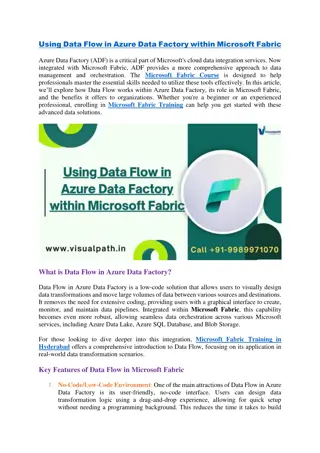Advanced Fabric Construction & Forming Technologies in Textile Technology
Explore advanced fabric construction techniques including non-woven, woven, knitted, braided, and tufted fabric technologies in textile technology. Discover the differences between fabric types, their dimensional stability, main applications, and forming methods like web formation and polymer bonding.
Download Presentation

Please find below an Image/Link to download the presentation.
The content on the website is provided AS IS for your information and personal use only. It may not be sold, licensed, or shared on other websites without obtaining consent from the author.If you encounter any issues during the download, it is possible that the publisher has removed the file from their server.
You are allowed to download the files provided on this website for personal or commercial use, subject to the condition that they are used lawfully. All files are the property of their respective owners.
The content on the website is provided AS IS for your information and personal use only. It may not be sold, licensed, or shared on other websites without obtaining consent from the author.
E N D
Presentation Transcript
TECHNOLOGY & LIVING Textile Technology S3.2.1 Advanced Fabric Construction
Fabric Forming Technologies Non-woven Fabric Technology Woven Fabric Technology Knitted Fabric Technology The technology used to form the fabric by interlacing two or more sets of yarns at the right angles to each others. The technology used to form the fabric by intermeshing the yarn into loops. The technology used to form the fabrics by fibre or filament webs. Photo(s) is/are owned and provided by HKDI.
Fabric Forming Technologies Braided Fabric Technology Tufted Fabric Technology Braid consists of three or more yarns twisted around one another. Tufted fabric has piles of fibres / loops of yarns that stand up from the base fabric. For example velvet, terry towel and carpets, Photo(s) is/are owned and provided by HKDI.
Comparison Fabric Fabric General General Structural Structural Features Features High dimensional stability Main Applications Main Applications for Apparel for Apparel Productivity Productivity Woven Outwear, suits, shirt, jeans, etc. High Knitted High extensibility and elasticity Underwear, intimate wear, sportswear, casual wear, etc. Higher than woven fabric Non-woven Low mechanical properties Liners, paddings, disposal clothing Highest
Non-woven Web Forming All nonwoven fabrics are based on a fibrous web. Characteristics of the web determine the physical properties of the final product. These characteristics depend on the methods of web formation.
Process Diagram Step 1: Polymer selection and conditioning Step 2: Extrusion and drawing of filaments into yarns Step 3; Yarn lay down to form layers Step 4; Add inlay or scrim if required Step 5: Bonding Step 6: Quality control Photo(s) is/are owned and provided by HKDI.
Forming Webs Methods Determined by fibre length - Initially the methods for the forming of webs from staple-length fibres were based on the textile carding process - Whereas web formation from short fibres was based on papermaking technology Determined by fibre diameter - Fibre diameter is a very important parameter for choosing a web forming method such as Spun-bonded (normal diameter) Melt blown (Microfibre Electrospun (nano-fibre)
Properties of Spun-bonded Web Chemical and physical stability High strength Unique and highly controllable structure which can be engineered to provide desired properties Very light and flexible structure to heavy and stiff structure
Application of Spun-bonded Web Automotive, e.g. trunckliner, floor carpets Civil engineering, e.g. railroad beds stabilisation, highway cracking prevention, protection Sanitary, e.g. napkins, diapers Medical, e.g. disposable operating room gowns, shoe cover Packaging, e.g. medical sterile packaging, high performance envelops
Properties of Melt Blown Web Random fibre orientation Lower to moderate web strength Good insulation and filtration Smooth surface texture Most melt blown webs are layered or shingled in structure, the numbers of layers is based on the required weight of the fabric
Application of Melt Blown Web Melt-blown is unique production method for very fine fibre Melt-blown system can be applied to micro-denier fibre Filtration media, e.g. cartridge filters, clean room filters Medical Sanitary, e.g. diaper top sheet Oil adsorbents, e.g. sorbents to pick up oil from surface of water Apparel, e.g. thermal insulation, substrate for synthetic leather
